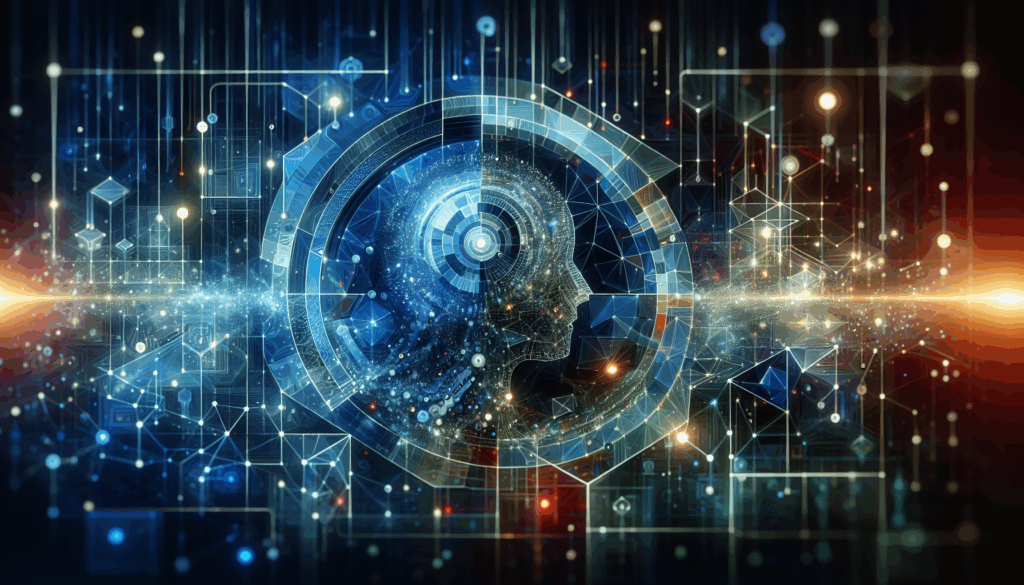=
Multi-Agent AI Systems: Revolutionizing Autonomous Intelligence
Introduction to Multi-Agent AI Systems
In the evolving landscape of artificial intelligence, multi-agent AI systems represent a transformative approach to solving complex, real-world problems. Unlike traditional AI models that operate in isolation, multi-agent systems consist of multiple autonomous agents that interact, communicate, and collaborate within an ecosystem to achieve shared goals. This collaborative intelligence paradigm has garnered significant attention in both enterprise and scientific domains due to its capacity to handle intricately structured tasks more effectively than monolithic AI models.
These systems are increasingly characterized by event-driven AI designs, where agents respond asynchronously to specific triggers or inputs, enhancing flexibility and responsiveness. Moreover, real-world applications frequently involve bounded AI problems, which are well-defined, limited in scope, and constrained by clear parameters to ensure reliability and predictability. The architecture supporting multi-agent AI is notably structured and modular, allowing individual components (agents) to specialize in discrete functions while contributing to an overarching objective.
The concept of an AI agent ecosystem emerges naturally from this architecture, entailing a regulated network of agents that operate interdependently. Enterprises leveraging these ecosystems are witnessing enhanced problem-solving capacity in fields like complex workflow automation, scientific research, and personalized services. Multi-agent AI systems strike a crucial balance between specialized autonomy and coordinated control, enabling scalable, real-time solutions that classical AI architectures struggle to deliver.
Background: Foundations of Multi-Agent AI Systems
Multi-agent AI systems did not emerge overnight. They evolved from the limitations observed in isolated AI models, which often proved insufficient when addressing multifaceted and dynamic environments. The move toward structured AI architectures exemplifies a systematic shift—designing AI solutions as loosely coupled, modular agents rather than monolithic entities. This modularity permits agents to operate semi-independently, processing contextual inputs and generating outputs in an event-driven manner that promotes asynchronous operation and dynamic adaptability.
A key conceptual shift involves embracing bounded AI problems, wherein agents are assigned narrow, well-scoped tasks with clearly definable success criteria. This limitation is strategic; by constraining problem domains, it becomes feasible to rigorously test, validate, and assure AI reliability and safety—a critical requirement in enterprise and regulatory-heavy scientific environments. For example, a logistics AI agent may optimally route delivery trucks within a fixed city perimeter rather than attempt unbounded routing across unknown geographies.
AI agent ecosystems symbolize the orchestration challenge when multiple autonomous agents coexist. Ecosystem management extends beyond mere deployment; it demands sophisticated monitoring, fault isolation, and observability tools that provide transparency into agent behavior and collective system health. Modern observability frameworks, highlighted by platforms like New Relic, enable real-time telemetry and troubleshooting, giving teams insights into agent performance disparities and their impact on enterprise workflows [source].
A helpful analogy is to envision a multi-agent system as an orchestra: each AI agent is a specialized musician, proficient in their instrument (task); the conductor symbolizes the structured software architecture and orchestration tools that ensure harmony, timing, and a cohesive performance. Without this structure, the agents' efforts would be disjointed, resulting in chaos rather than symphony. This foundational understanding guides the present and future trajectory of AI applications across domains.
Current Trends in Multi-Agent AI Systems
The rapid proliferation of AI technologies has ushered in distinct trends shaping multi-agent AI systems today:
-
Event-Driven AI Microservices: Modern multi-agent setups typically deploy agents as discrete microservices, triggered by events such as data updates, user actions, or external API calls. This architecture enhances responsiveness and robustness by isolating agent failures and enabling parallel task execution.
-
Realistic Focus on Bounded Problems: The earlier hype surrounding open-world, generalized AI systems—agents that can solve any problem—has moderated. In contrast, the industry emphasizes practical, bounded AI systems targeting specific enterprise needs such as invoice processing, customer onboarding, or supply chain optimizations. This pragmatism drives reliability and real-world ROI.
-
Rise of Agentic AI: Multiple smaller AI models are orchestrated autonomously within agentic AI frameworks, where agents specialize and collaborate to unravel complex, multi-step tasks. This contrasts with earlier large monolithic models that struggled with nuance and task decomposition.
-
Enhanced Observability and Orchestration: Given this complexity, observability platforms like New Relic have become indispensable. They gather telemetry across AI agents, enabling developers to detect anomalies, performance bottlenecks, or unintended behaviors in real time. Observability not only aids troubleshooting but also optimizes workflows by identifying agent utilization patterns [source].
To illustrate, consider a financial institution automating loan approvals. Instead of one monolithic AI, multiple agents analyze credit scores, employment verification, fraud detection, and compliance checks—all event-driven and operating within strict boundaries. Observability tools monitor these agents’ interactions to ensure they seamlessly hand off tasks and meet transparency and audit requirements.
Insights: Challenges and Solutions in Multi-Agent AI Systems
The sophistication of multi-agent systems brings a set of inherent challenges, chiefly in reliability, safety, liability, and coordination:
-
Liability & Safety through Human Oversight: Autonomous AI agents still face limitations, including hallucinations and unpredictable outputs. The \"colleague-in-the-loop\" model integrates human experts to oversee high-risk decisions, ensuring that critical judgments receive appropriate contextual scrutiny without hampering automation efficiency. This hybrid oversight mitigates risks and builds organizational trust.
-
Orchestration & Observability Platforms: Managing AI agent ecosystems requires robust orchestration layers that schedule agent interactions, resolve dependencies, and handle failures gracefully. Observability platforms such as New Relic unify data streams from diverse agents, give real-time alerts, and even use AI-powered interventions to remediate issues autonomously and swiftly.
-
Deterministic Software Engineering Wrapping AI Models: Although underlying AI models are probabilistic, embedding them within deterministic software frameworks ensures reproducibility, testability, and predictable system behavior crucial for enterprise-grade solutions.
-
Distributed Decision-Making: Multi-agent AI systems enhance decision quality by allocating subtasks to specialized agents, leveraging their niche expertise, and synthesizing their outputs. This distribution avoids single points of failure and enables scalable parallelism.
Together, these solutions form a resilient framework, where AI autonomy balances with control and oversight. Observability and orchestration emerge as the nervous and circulatory system of this AI organism, constantly monitoring and adapting agent interactions to maintain system health.
Future Forecast: The Evolution of Multi-Agent AI Systems
Looking ahead, multi-agent AI systems are poised for exponential growth and transformative impact:
-
Scale Acceleration: Deployment of AI agents is projected to grow by 1000x by 2030, driven by wider enterprise adoption and expanding application domains. Concurrently, human oversight efficiency is forecasted to improve by 50x through advanced tooling and automation.
-
Model Diversity: Enterprises will increasingly leverage diverse AI models within ecosystems, combining generalist LLMs with specialized domain-specific agents to tailor solutions precisely to business needs.
-
Observability and Agentic Platform Proliferation: Advanced AI monitoring, diagnostics, and orchestration platforms will become standard operational infrastructure — essential for managing complex agentic AI systems spanning industries.
-
Expanding Application Horizons: Beyond enterprise automation, multi-agent AI will accelerate scientific discovery, as collaborative AI researchers tackle complex experimental design and data analysis, and enhance personalized services like AI travel agents that craft tailor-made itineraries from user-generated content and preferences.
In essence, multi-agent AI systems embody a paradigm shift from isolated algorithms toward collaborative, adaptable, and transparent AI ecosystems — foundations for reliable, efficient, and trustworthy autonomous intelligence.
Conclusion and Call to Action
Multi-agent AI systems represent a pivotal advancement in the AI domain, addressing critical challenges inherent in monolithic, generalist AI approaches by focusing on bounded, well-defined problems. Their structured, event-driven architectures and emphasis on ecosystem observability provide a robust path toward scalable, dependable AI solutions across industries—from enterprise automation to scientific research and personalized digital assistants.
Organizations looking to harness this transformative potential should prioritize investment in comprehensive observability tools and embrace structured AI ecosystems to facilitate interoperability, transparency, and continuous optimization. Exploring emerging frameworks and platforms that support modular agent development and real-time orchestration will be essential to maintaining competitive advantage.
For professionals and decision-makers eager to stay at the forefront of AI innovation, subscribing to expert insights and consulting with domain specialists can provide the guidance needed to navigate this rapidly evolving landscape.
Together, multi-agent AI systems are not just the future of autonomous intelligence — they are the practical foundation upon which it will be built.
For a deeper dive into the critical role of observability in AI agent ecosystems, see Transform 2025: Why Observability is Critical for AI Agent Ecosystems.


